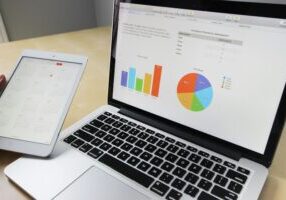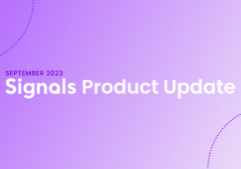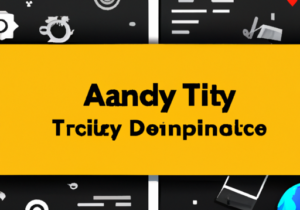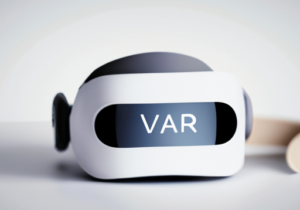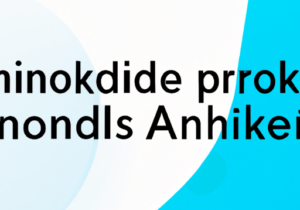In Conversational Marketing by David Cancel, he describes a website as a store. But what happens? The customer walks through the door and through all the aisles, but there’s no human in sight, no products to see in-person, and no prices. Our goal for demo and pricing chatbots is to engage customers immediately, qualify the lead, and book a meeting where the customer can talk with a sales rep – right in the moment when their intent to buy is the highest. For this reason, one of our partners has two buttons at the top of their website (within the menu bar) which serve bots to the site visitor when clicked.

It’s been said that in marketing “Everything works, and nothing doesn’t”.
The main problem many companies face when deciding where to allocate marketing dollars is how to track return on investment. But which elements of the website are more effective at creating revenue for your company? Does button “X” or page “Y” bring in more revenue? Many companies have grappled with this question and either they don’t have enough data to give an answer or they don’t have the time to dig through it.
This leads us to the question of our case study: In a duel between the demo bot and the pricing bot, which one generated 213% more revenue?
The Case Study: Key Metrics
Let’s take a look at each key metric of the sales funnel to compare the two.
[Note: the following graphs compare only pricing and demo request bots, not all bots offered on the website. This data is based on 4,733 conversations.]
Number of Button Clicks
For number of button clicks, the pricing request bot wins. In this bar chart we see that 45% of conversations were for demo requests, whereas 55% were for pricing requests. Ten points for Pricing! (just imagine hearing that in Professor McGonagall’s voice)

Number of Conversations
As for number of conversations, the demo bot performs slightly better than pricing. The drop of interest in the pricing bot can be partially attributed to how the website is set up. Many people who click on the pricing button were probably trying to access a pricing page to merely see information rather than interact with a bot, which is designed to schedule a pricing meeting.

Conversion Rates for Capturing Email
Switching over to conversion rates rather than counts, the demo bot has a 48% email capture rate and the pricing bot captures 41% of emails for people chatting with the bot.

Conversion Rate for Booking Meetings
After qualifying the lead and obtaining a valid business email, the bots let the site visitor book a meeting. Interestingly, the conversion rate from email capture to booking a meeting is the same for both bots at 42% conversion. It’s a draw!
Number of Opportunities
Next, number of opportunities created at the bottom of the funnel. The demo bot accounted for 66% of the opportunities created, nearly double the opportunities captured by the pricing bot.

Dollar Amount of Opportunities
However, the most important metric of a sales funnel is the dollar amount of closed deals.

The demo bot wins by a landslide! For revenue generation, the demo bot outperforms the pricing bot by $2,202,992.03 (that’s a 3X difference)!
Here’s our classic ChatFunnel to summarize the comparison of the two bots:
[Note: Email capture rate and meetings booked rate were based on the individual bot’s conversion rate, whereas the other percentages are based on total counts out of all pricing and demo requests.]
Hypotheses
In this study we hypothesize that people who select the demo button have a higher intent of buying because when they click on the demo button, they are actively seeking a demo. However, people who select pricing have relatively lower intent because they are not specifically seeking out a pricing meeting, just pricing information. What the site visitor expects to happen does not always match what is being offered by the bot upon button click. This discrepancy leads to a more disjointed user experience for site visitors and lower performance for the pricing bot.

Another interesting fact is that typically the average deal size is higher for closed deals resulting from a demo request. Our hypothesis is that site visitors who select the pricing button are more price sensitive because they are seeking that information first before considering a demo. For them, cost is a top consideration before they investigate product functionality.
Going Forward
The pricing bot is still successful in capturing qualified leads, booking pricing meetings, and leading to closed opportunities. We do not recommend that companies throw out the pricing bot and only offer demos because in this specific case the partner would miss out on 34% of their opportunities. However, tracking performance of different offerings on the website can inform future spend of marketing dollars and where to focus. This knowledge can also influence website design. For example, the demo button could be more pronounced with a distinct color or border, whereas the pricing button could be shown as a menu item within a list. Furthermore, placing demo buttons throughout your site as people scroll down various pages would be more profitable than having a pricing bot in those same places.
Our partner has found that using both of these bots has created a resulting $4,269,055.97 in sales revenue. Although for this comparison, the demo bot is stronger when we compare the two offerings for site visitors.
READ MORE
Start seeing your Buyers' signals
Signals is helping companies automate, grow, and close sales pipeline with industry-leading predictive intent scoring, lead generation, and real-time engagement.



